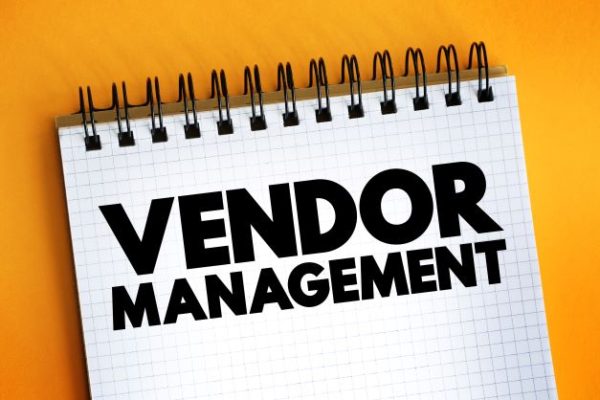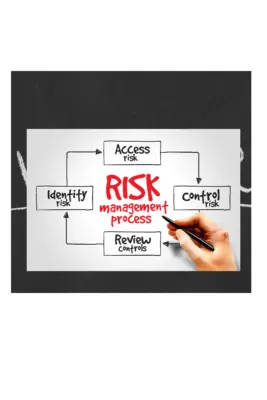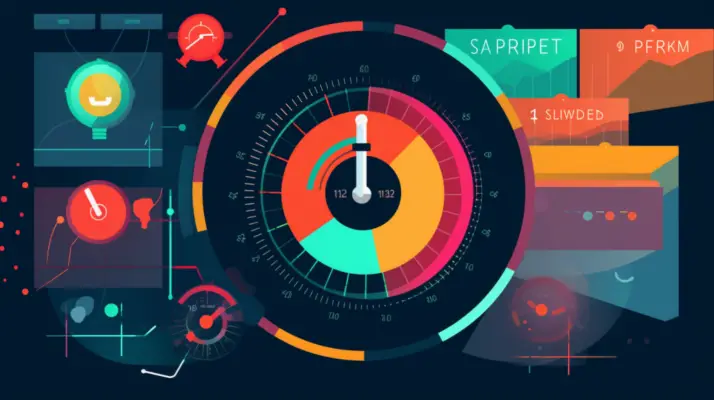Vendor risk assessment is a process that organizations undertake to evaluate the potential risks associated with their vendors and suppliers. It is one of the operational risks of the organization.
Assessing risks posed by external parties involves a systematic and objective analysis, helping organizations identify and mitigate any potential vulnerabilities. This assessment is crucial for ensuring the security, reliability, and compliance of the products or services provided by vendors.
Different vendor risk assessment reviews exist, including on-site assessments, document reviews, and questionnaires.
These reviews help organizations gather information about the vendor’s internal controls, security measures, and risk management practices. Informing on vendors compliance risk.
Using this information, organizations can determine the level of risk associated with each vendor and make informed decisions regarding their selection and ongoing management.
A vendor risk assessment involves a structured process that includes identifying vendors, assessing their risk profile, conducting due diligence, and monitoring their performance over time.
This process requires a collaborative effort between various stakeholders, such as procurement, legal, and information security teams, to ensure a comprehensive and effective assessment.
To ensure the success of vendor risk assessment, organizations should adhere to best practices, such as establishing clear risk assessment criteria, conducting regular assessments, and maintaining open communication with vendors.
Additionally, implementing vendor lifecycle management practices can further enhance the effectiveness of vendor risk assessment by providing a standardized approach to vendor onboarding, monitoring, and termination.
Organizations can safeguard their operations, protect sensitive data, and maintain compliance with regulatory requirements by evaluating and managing vendor risks.

What Is Vendor Risk Assessment?
Vendor risk assessment is a systematic and objective process used to evaluate the potential risks associated with engaging third-party vendors. This enables organizations to make informed decisions and mitigate potential threats.
The vendor risk assessment process involves identifying and assessing the risks that could arise from vendor relationships, such as operational, reputational, compliance, and financial risks.
It starts with a vendor list and potential risks affecting vendors, i.e., natural disasters, replacement risks, and regulatory compliance.
Organizations can identify potential vulnerabilities and develop strategies to manage and minimize these risks by conducting a thorough assessment.
This process typically involves establishing risk criteria and conducting due diligence on potential vendors, including evaluating their financial stability, security controls, and adherence to regulatory requirements.
The remaining risk rating residual risks ensure mitigations for various categories of risks.
Organizations can effectively manage the risks associated with their vendor relationships by implementing a vendor risk assessment process, allowing them to make informed decisions.
Different Types of Vendor Risk Assessment Reviews
This will focus on the different types of vendor risk assessment reviews, specifically examining the impacts of different vendors on risk.
Vendor risk assessment reviews involve evaluating the potential risks associated with engaging with different vendors and suppliers.
Organizations can make informed decisions about engaging with vendors and mitigating risk effectively by understanding the specific types of vendors and their respective risk impacts.
Different Types of Vendors and Risk Impacts
Categorizing vendors into different types allows for a comprehensive assessment of the potential risks they may bring, enabling organizations to understand better the diverse impacts each type of vendor could have on their overall risk profile.
When conducting third-party risk assessments, organizations must consider the nature of their business partners and potential vendors. Different types of vendors can pose different inherent risks to an organization.
For example, technology vendors may introduce cybersecurity vulnerabilities, while financial vendors may present risks.
Additionally, third-party vendors with access to sensitive data or systems can pose a higher risk than vendors with limited access.
Using categorizing vendors based on their type and assessing the associated risks, organizations can develop a robust vendor risk management program that addresses the specific risks posed by each vendor.
How to Perform the Risk Assessment Process
This discussion will focus on three key templates that are commonly used in the risk assessment process:
– The Risk Assessment Matrix Template is a tool that helps organizations evaluate and prioritize risks based on their likelihood and potential impact.
– The Vendor Assessment Template assesses vendors’ capabilities and overall performance.
– The Vendor Risk Assessment Questionnaire Template is designed to gather information about potential risks associated with specific vendors.
These templates are crucial in facilitating a systematic and structured approach to risk assessment, enabling organizations to make informed decisions regarding vendor selection and risk mitigation strategies.
Risk Assessment Matrix Template
The Risk Assessment Matrix Template provides a comprehensive framework for evaluating and quantifying potential risks associated with vendor relationships.
It allows organizations to make informed decisions and effectively manage their vendor risks.
The template is designed to assess various risks, such as financial, operational, legal, and reputational risks. It categorizes risks into different levels based on their potential impact, ranging from low to high.
The matrix helps organizations identify the level of risk posed by each vendor and determine the appropriate risk mitigation strategies.
Organizations can use the template to prioritize vendor risk assessments and allocate resources accordingly.
The risk assessment matrix template enables organizations to have a systematic approach to assessing vendor risks and ensures that they can identify and address any potential impact on their operations, reputation, and overall business performance.

Vendor Assessment Template
Utilizing the Vendor Assessment Template allows organizations to systematically evaluate and analyze various aspects of their vendor relationships, enabling informed decision-making and effective management of potential risks.
This template is a valuable tool in vendor risk assessment, providing a structured approach to assess and monitor the risks associated with third-party vendors. The vendor assessment process involves collecting relevant information about the vendor’s operations, security measures, and compliance with regulations.
Organizations can use the template to identify and prioritize risks, determine the necessary controls and mitigation strategies, and conduct regular vendor risk reviews.
This continuous risk assessment ensures that organizations stay proactive in managing risks and maintaining a secure vendor ecosystem. The table below demonstrates the potential risk areas that can be assessed using the Vendor Assessment Template:
| Risk Area | Description | Risk Level |
|---|---|---|
| Data Security | Evaluates the vendor’s data protection measures | High |
| Financial Stability | Assesses the vendor’s financial health and stability | Medium |
| Regulatory Compliance | Determines if the vendor adheres to relevant laws and regulations | High |
| Business Continuity | Examines the vendor’s ability to recover and continue operations in the event of disruptions | Medium |
Vendor Risk Assessment Questionnaire Template
Implementing a comprehensive questionnaire template enables organizations to evaluate and scrutinize various aspects of their vendors methodically. This fosters an informed decision-making process and efficient management of potential risks in vendor relationships.
This template serves as a valuable tool for conducting vendor risk assessments, allowing organizations to assess their vendors’ security controls, financial stability, and compliance measures.
The questionnaire covers a range of areas, including data security practices, business continuity plans, and incident response procedures.
This questionnaire allows organizations to gather essential information about their vendors’ risk profiles, identify potential vulnerabilities, and develop a robust risk management plan.
This process helps organizations in their third-party risk management efforts, enabling them to prioritize vendor relationships based on risk levels and allocate appropriate resources for monitoring and mitigating potential risks.
Ultimately, implementing a vendor risk assessment questionnaire template supports the role of the vendor risk manager in ensuring the security and resilience of the organization’s vendor ecosystem.
Vendor Risk Assessment Best Practices
Effective vendor risk assessment requires careful consideration of best practices to ensure the security and reliability of third-party vendors.
Organizations must identify and assess potential risks associated with their business relationships with third-party service providers. This involves thoroughly evaluating the vendor’s security controls, financial stability, and compliance with regulatory requirements.
It is important to establish clear risk tolerances and criteria for evaluating vendors. This allows organizations to prioritize their assessments based on the level of risk posed by each vendor.
Additionally, organizations should regularly review and update vendor risk assessments to account for vendor operations or business environment changes.
Organizations can effectively address vendor risk and mitigate potential threats to their operations and data by implementing recommended practices.
What is Vendor Lifecycle Management?
Vendor lifecycle management refers to the comprehensive process of managing and overseeing the various stages of a vendor’s relationship with an organization, encompassing vendor selection, contract negotiation, performance monitoring, and termination.
One important aspect of vendor lifecycle management is vendor risk assessment. This involves evaluating and analyzing the potential risks associated with engaging with vendors, particularly high-risk vendors, and developing strategies to mitigate these risks.
The goal is to minimize the organization’s risk exposure and ensure that vendors meet the organization’s security and compliance requirements.
Vendor risk assessment involves categorizing risks into different categories, such as operational, financial, legal, and reputational risks.
Organizations can assess and manage vendor risks by implementing a third-party risk management program, identifying vulnerabilities, and establishing controls to mitigate risks.
Frequently Asked Questions
What are the common challenges organizations face when conducting a vendor risk assessment?
Organizations’ Common challenges when conducting a vendor risk assessment include the lack of standardized methodologies, difficulty obtaining accurate information from vendors, limited resources for assessment, and the need for continuous monitoring and reassessment.

How can organizations determine the criticality of their vendors in terms of risk?
Organizations can determine the criticality of their vendors in terms of risk by assessing factors such as the vendor’s access to sensitive information, the impact of a vendor’s failure on the organization’s operations, and the availability of alternative vendors.
Are there any legal or regulatory requirements that mandate organizations to perform vendor risk assessments?
Yes, legal and regulatory requirements mandate organizations to perform vendor risk assessments. These requirements aim to ensure the protection of sensitive data and the mitigation of risks associated with third-party vendors.
What are some key factors organizations should consider when selecting vendors for assessment?
When selecting vendors for assessment, organizations should consider the vendor’s reputation, financial stability, information security practices, compliance with regulations, and ability to meet the organization’s specific requirements and needs.
How often should organizations conduct vendor risk assessments to ensure ongoing monitoring and evaluation of vendors’ risk profiles?
Organizations should conduct vendor risk assessments regularly to ensure ongoing monitoring and evaluation of vendors’ risk profiles. The frequency of these assessments should be determined based on the level of risk associated with the vendor and the importance of the services they provide.

Conclusion
Vendor risk assessment is an important process that allows organizations to identify and address potential risks related to their vendors. Through comprehensive assessments and reviews, organizations can evaluate vendors’ reliability, security measures, and compliance with industry regulations.
Implementing best practices such as regular assessments, clear communication, and proper documentation can enhance the effectiveness of the vendor risk assessment process.
Additionally, integrating vendor risk assessment within the vendor lifecycle management framework ensures continuous monitoring and evaluation of vendors throughout their engagement with the organization.
Vendor risk assessment is a necessary part of risk management strategies for organizations.

Chris Ekai is a Risk Management expert with over 10 years of experience in the field. He has a Master’s(MSc) degree in Risk Management from University of Portsmouth and is a CPA and Finance professional. He currently works as a Content Manager at Risk Publishing, writing about Enterprise Risk Management, Business Continuity Management and Project Management.
